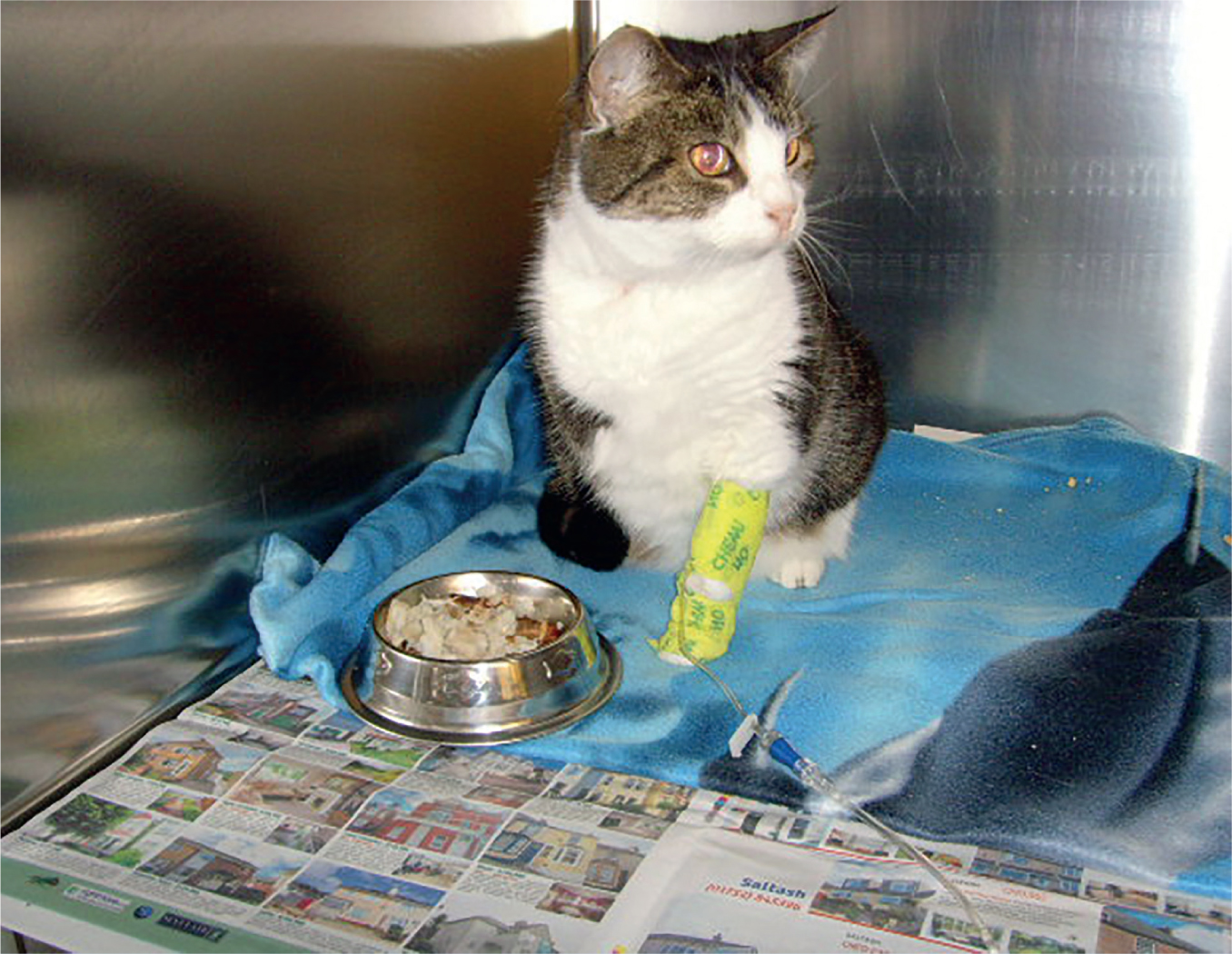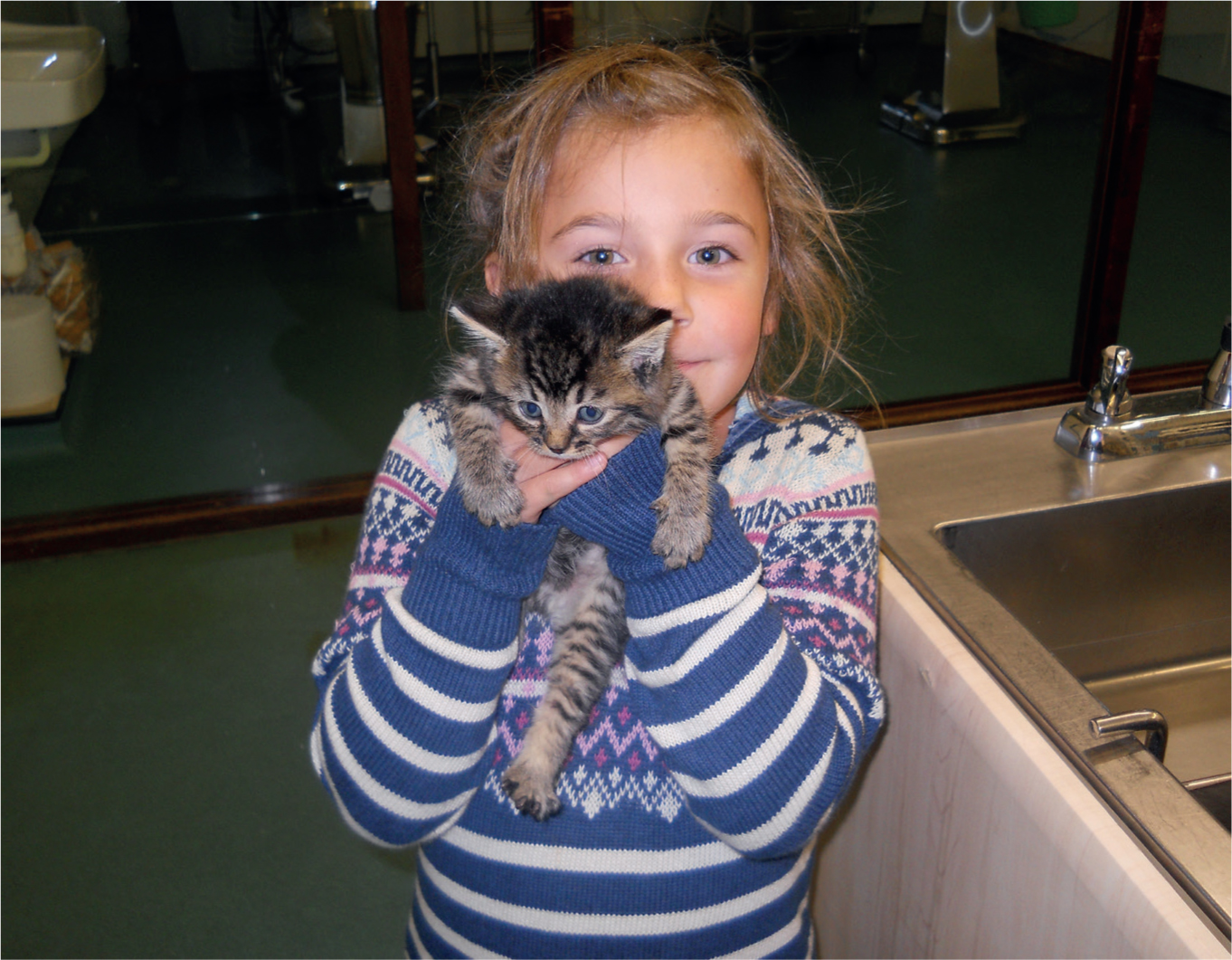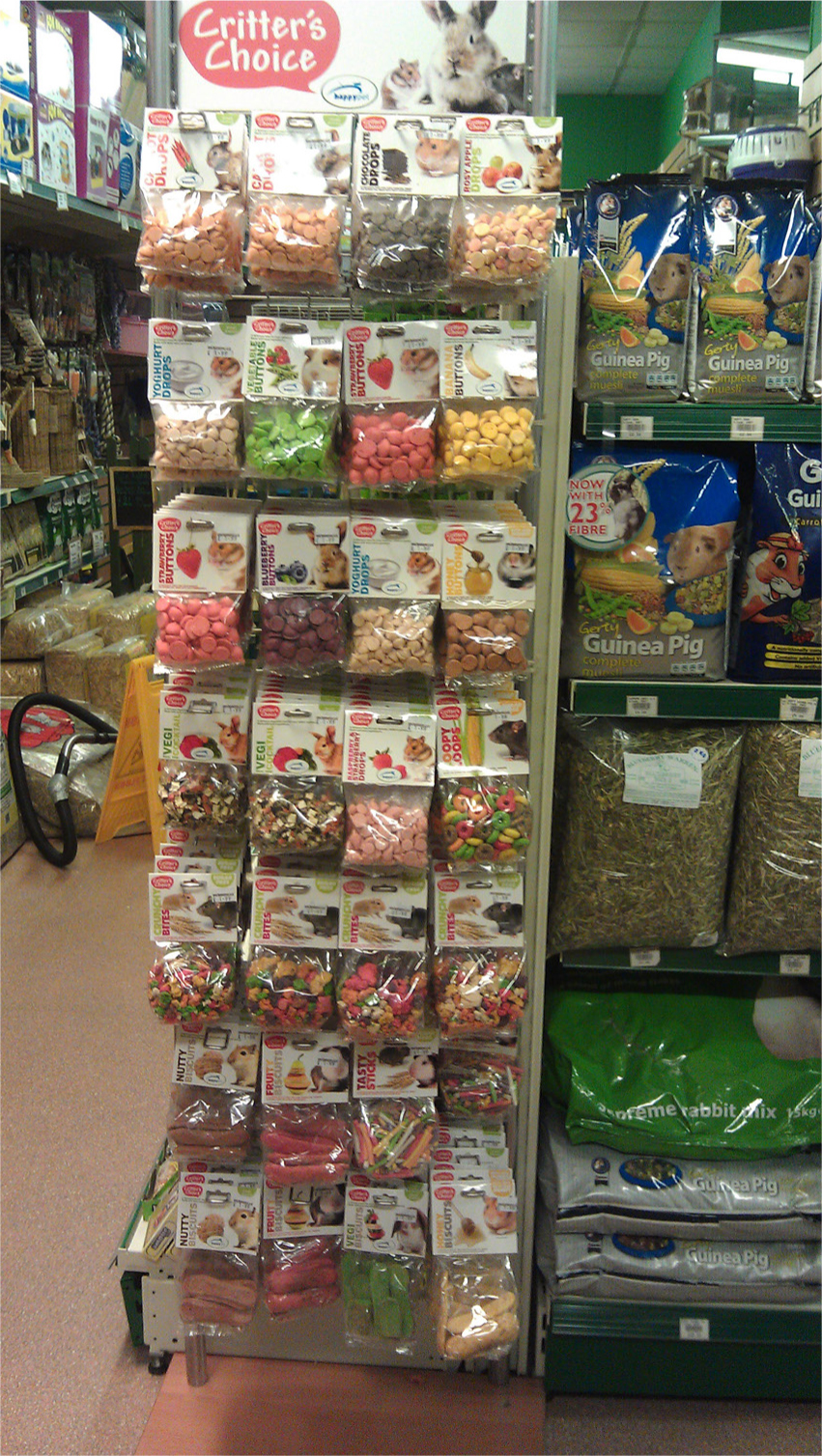There are many arguments surrounding the correct way to feed a balanced healthy diet to dogs and cats. This paper will present the current scientific knowledge from peer-reviewed mainstream journals and peer-reviewed research groups, not views, opinions or anecdotal evidence. It is important when viewing literature that the type (Level) of evidence being written up is identified (Table 1), Level 1 evidence being of the highest value. It is also important to look at whether control groups have been used, study size, methodology and possibly who has funded the study (whether this has had an influence on the study outcome — which ideally it should not). Different countries have different legal requirements surrounding selling of diet, labelling and consumer legislation.
| Level of evidence | Types of evidence |
|---|---|
| Level 1 | Evidence from a systematic review or meta-analysis of all RCTs or evidence-based clinical practice guidelines based on systematic reviews of RCTs |
| Level 2 | Evidence obtained from at least one well-designed RCT |
| Level 3 | Evidence obtained from well-designed controlled trials without randomisation |
| Level 4 | Evidence from well-designed case-control and cohort studies |
| Level 5 | Evidence from systematic reviews of descriptive and qualitative studies |
| Level 6 | Evidence from a single descriptive or qualitative study |
| Level 7 | Evidence from the opinion of authorities and/or reports of expert committees |
(RCT, randomised controlled trial)
What do the terms mean?
All pet foods are heavily marketed, even those that say they do not like marketing, are marketing to a specific market. The terms ‘natural’ and ‘hypoallergenic’ are not regulated, and therefore can be used to describe anything in the UK market. Hypoallergenic was invented by the cosmetic industry in 1953, (Mesley and Johnson, 2000). Organic however, is a closely regulated industry throughout Europe, North America and Australia. The term holistic foods in itself cannot be holistic since it is only one of a number of factors that contribute to a dog's health. Nevertheless, over the last couple of decades, more and more pet foods have been labelled as ‘holistic’. Nutrition is an important aspect of the total holistic care of the animal, and makes up an important element of the nursing care plan (Figure 1).

The official Association of American Feed Control Officials (AAFCO) definition for ‘natural’ (in the USA) as the term relates to pet food is: a feed or ingredient derived solely from plant, animal or mined sources, either in its unprocessed state or having been subjected to physical processing, heat processing, rendering, purification extraction, hydrolysis, enzymolysis or fermentation, but not having been produced by or subject to a chemically synthetic process and not containing any additives or processing aids that are chemically synthetic except in amounts as might occur unavoidably in good manufacturing practices (AAFCO, 2015). Veterinary technicians in the USA use the AAFCO guidelines and statements on pet food bags to help give advice to pet owners. However, AAFCO is made up of members from pet food companies alongside states and federal representatives; thus may not provide a completely unbiased view of nutrition.
According to European guidelines, ‘natural’ pet food ingredients are defined as: ‘pet food components to which nothing has been added and which have been subjected only to such physical processing as to make them suitable for pet food production and maintaining the natural composition’ (The European Pet Food Industry Federation (FEDIAF), 2011). This excludes almost all artificial additives (preservatives, colourings and flavourings), ingredients that have undergone chemical treatment like bleaching or chemical oxidisation and all genetically modified products. It does, however, allow synthetic vitamins and digest (meat hydrolysate) to be called ‘natural’.
Food contamination
Contamination and spoiling of all foods is possible in all foods, whether raw, home-cooked or manufactured/processed diets. Joffe and Schlesinger (2002) found that 80% of biologically appropriate raw food (BARF) diets contained Salmonella, and, of those pets fed these diets, 30% shed Salmonella in their stools. The Food and Drug Administration (FDA) in the USA estimates that 80% of raw chicken is contaminated with Salmonella. This is chicken sold in supermarkets for human consumption, showing the necessary requirement for good food hygiene during preparation and thorough cooking to prevent human infection. This does not, however, remove the potential risk to the animal, if fed raw, or the increased risk to family members of the bacteria shed into the environment (Figure 2). In the USA and China there have been several food recalls of processed pet foods due to contaminations (AVMA, 2016). The most notable being contamination of pet foods with melamine (an organic base containing large amounts of nitrogen — used in China to ‘push up’ the nitrogen content), which can lead to renal damage (FDA, 2014).

Meta-analyses (Level 1 evidence), have shown that there is a real risk of food contamination from raw meats to both the human and animal population (Schlesinger and Joffe, 2011). This is an issue that needs to be discussed with pet owners.
Some raw diets that have undergone high pressure pasteurisation at 100-800 MPa, with a slight temperature increase (3°C/100MPa) are available, but there is no standardisation of this method of food preparation for these types of diets. Differences will occur with batch size, ingredients used and volume cooked at each time. It should also be remembered that preservatives in pet foods are not just included to stop bacteria and fungus from multiplying, but also to preserve the food ingredients. It is the cooking process (extrusion) that removes the bacterial contamination.
Canned diets can be considered as sterile, providing that there is no damage to the tin. It is important to ensure that raw diets that are supplied frozen are kept at −20°C, and most domestic freezers (and those supplied by commercial raw food manufacturers) are set at a temperature of -18°C. Freezing is most often used to eliminate parasites, for example, freezing (e.g. 2 days at −20°C) can effectively eliminate Toxoplasma. (Kijlstra and Jongert, 2008). Campylobacter spp. are also relatively intolerant of freezing, although freezing is not a tool that can be used with confidence to eliminate the risk of campylobacteriosis (Weese, 2014).
Gastric pH
One argument that is commonly used in the feeding of processed versus raw/home-cooked diets is the pH differences that these diets produce when fed, with only dogs being fed raw diets having the ‘physiologically correct’ low pH. The gastric pH of fasting dogs can fluctuate from 2.7 to 8.3, with a mean of 6.8 +/− 0.2 (SE) (Akimoto et al, 2000). Sagawa et al (2009) demonstrated that dogs fed a dry commercial diet had an average stomach pH of 1.08 and 1.26 depending on the volume of dry diet fed.
Nutritional risks and benefits
On literature review there were no papers found at Levels 1, 2 or 3 that demonstrate any advantages or disadvantages of feeding a non-commercial diet (raw, home-cooked diets). There is Level 4 evidence that demonstrates the nutritional risks of unbalanced diets, including hypervitaminosis A (Polizopoulou et al, 2005), pansteatitis (Niza et al, 2003), osteodystrophy (DeLay et al, 2002) and nutritional hyperparathyroidism (Kawaguchi et al, 1993).
As a regulated profession in a scientific field the information provided to clients needs to be based on evidence, not conjecture. All of the evidence regarding the nutritional risks of these diets is currently based on individual cases, where unbalanced diets were being fed. The difficulty is designing and implementing a nutritionally balanced diet for a given animal's individual needs. Davies (2014) revealed that even when using a recipe for a home-cooked ration for dogs with chronic kidney disease, made by qualified veterinary nurses, the diets showed considerable nutritional variations depending on the sourcing of ingredients, cooking differences and interpretation of the recipe. The recommendation from this study was that very detailed recipes that gave specific instructions on ingredients and preparation are required.
Stockman et al (2013) investigated home-cooked diets and concluded that only experts, board certified animal nutritionists or veterinarians with advanced training in nutrition should be formulating diets for companion animals (cats and dogs). It can be exceptionally difficult to find a nutritionist that fulfils these credentials; however client education in general terms in regards to nutrition is important so that clients can make informed choices regarding their pet's diet (Figure 3).

Piyarungsri and Pusoonthornthum (2016) demonstrated that feeding a commercial dry diet is a preventative factor in developing chronic kidney disease, compared with feeding a home-prepared diet. Whereas in a lifelong study, Adams et al (2016) demonstrated that being fed a premium diet for life was a contributing factor in increased longevity. Both of these studies demonstrated correlation between diet and ‘better health’ but did not directly demonstrate causation. Other factors such as appropriate healthcare, husbandry, and maintaining a life-long lean body mass were key (Adams et al, 2016).
Evolution of the digestive system
In 2013 it was demonstrated that the genetic makeup of domesticated dogs does differ from wolves (Axelsson et al, 2013). Mutations were identified in key genes that provide functional support for an increased starch digestion. The results indicate that these novel adaptations allowed the early ancestors of modern dogs to thrive on a diet rich in starch relative to the carnivorous diet of wolves; this could have constituted a crucial step in the early domestication of dogs. The argument that dogs should be fed a diet that reflects one that a wild ancestor would have been fed therefore becomes invalid.
Sturgeon et al (2014) presented results of a study investigating the gastrointestinal microbiota in wolves and in domesticated dogs. The results showed that the faecal microbiota of wolves is highly variable, perhaps as a reflection of the variable and inconsistent diet of wild canids. In contrast, the faecal microbiota of dogs was more consistent, with no difference in population structure between raw and conventionally fed dogs. The study concluded that diet can have an impact on the faecal microbiota of individual dogs and that the faecal microbial population and structure is relatively consistent amongst the different feeding groups; finally feeding dogs raw meat does not result in development of a faecal microbiota more akin to that of wolves (Sturgeon et al, 2014).
The current situation in the UK
At present there is only one commercially available raw diet that is approved by the Pet Food Manufacturer's Association (PFMA) as a balanced lifestage diet. Clients are looking for good nutritional advice but do not necessarily know where to get this advice from. Veterinary nursing and technician training syllabuses cover the details of nutrients, digestion and utilisation of diets, but do not cover details of the different brands of diets, giving an unbiased view of nutrition. Post qualification the ‘education’ that veterinary nurses are given is from commercial nutrition companies. Finding unbiased nutritional information that is readily available for veterinary nurses and technicians can be very difficult. Interpretation of research studies can also be very difficult for those that have not be instructed on ‘reading between the lines’.
Conclusion
There are multiple levels of evidence which examine the feeding of commercial diets; these include longitudinal randomised controlled studies, and exploration of the benefits of specific ingredients and nutrients, however many are sponsored by commercial nutrition companies. Rigorous unbiased research, including the use of randomised data collection and control groups, needs to be conducted on BARF/raw feeding diets in order to produce Level 2 and 3 evidence which can then be disseminated via peer-reviewed mainstream journals.

